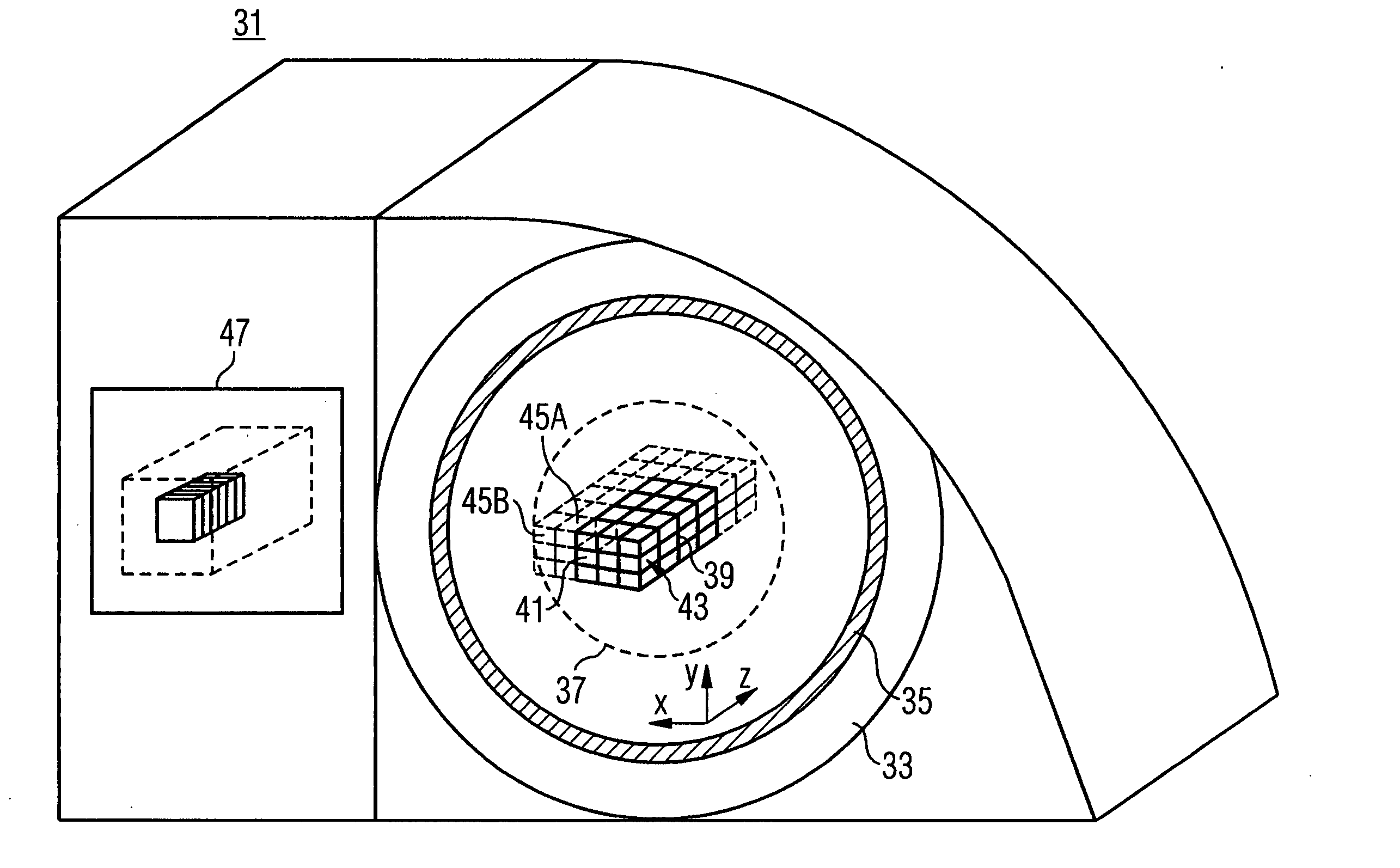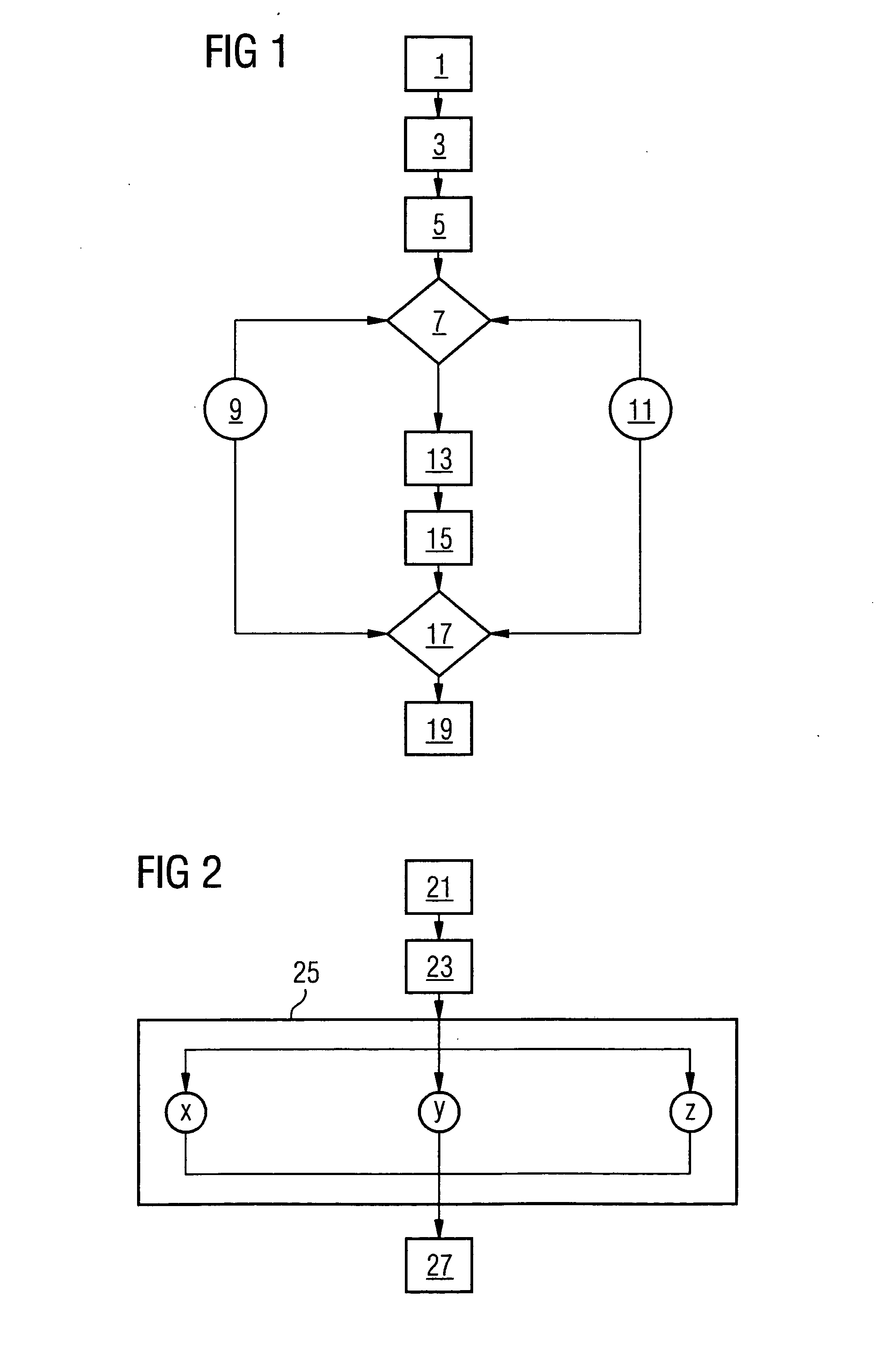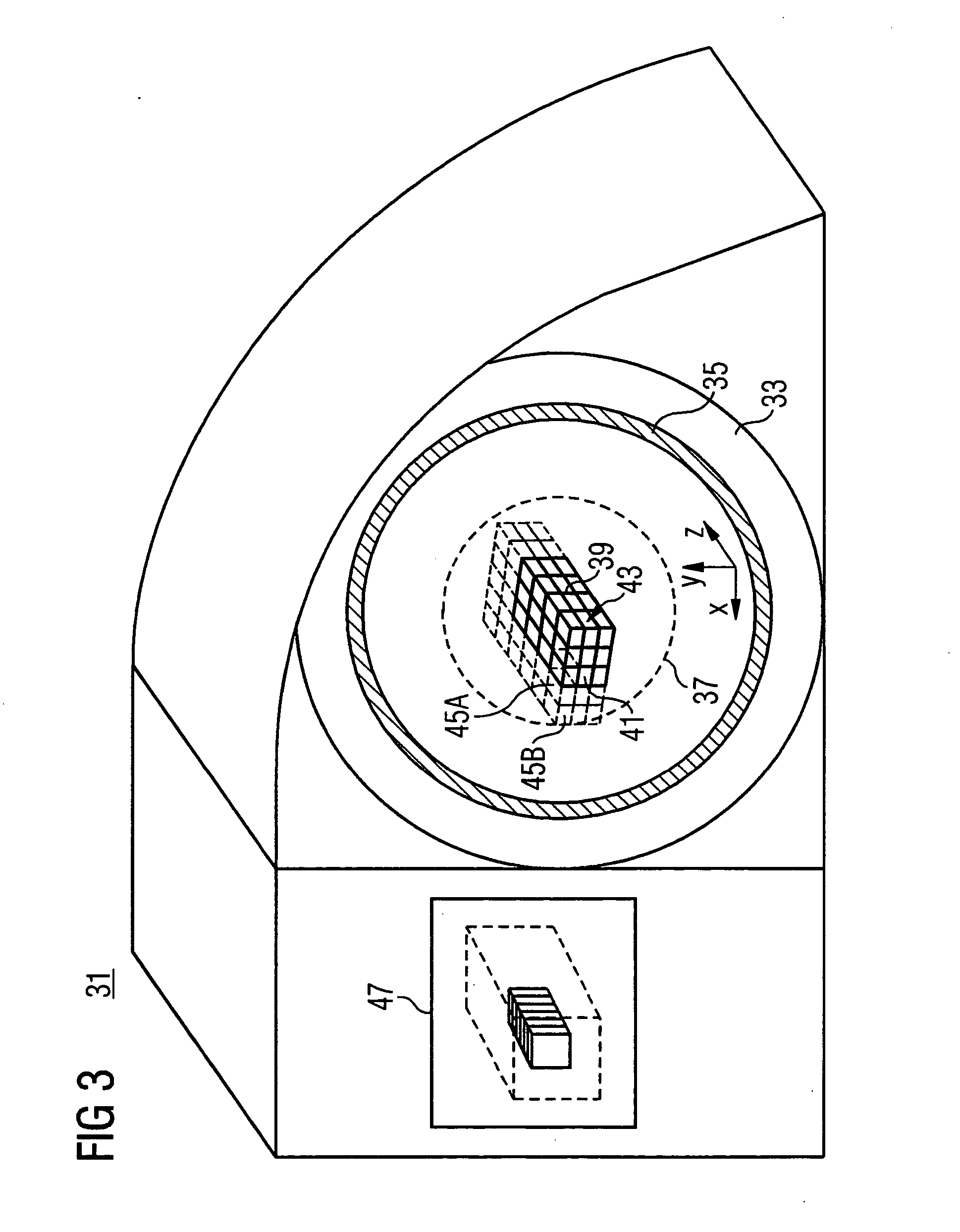Distortion-corrected magnetic resonance measurement and magnetic resonance device
- Summary
- Abstract
- Description
- Claims
- Application Information
AI Technical Summary
Benefits of technology
Problems solved by technology
Method used
Image
Examples
Embodiment Construction
[0033]FIG. 1 shows a typical execution sequence of the method in accordance with an embodiment of the invention for performing a distortion-corrected magnetic resonance examination. After a patient is registered, positioned and brought into 1 a magnetic resonance device a localizer measurement 3 is normally performed. The localizer measurement 3 gives the operator an overview of the position of the patient within the magnetic resonance device, in which case the localizer measurement is normally taken at low resolution. The examination area is determined 5 on the basis of the localizer measurement 3. The area of examination is the area of interest which is needed to resolve a clinical inquiry.
[0034] The next stage is the calculation 7 of the measurement volume. Input parameters are the examination area, the distortion correction algorithm used 9 and also the coefficients used 11 to describe the magnetic field used in the measurement. For example a distortion field of the magnetic fi...
PUM
 Login to View More
Login to View More Abstract
Description
Claims
Application Information
 Login to View More
Login to View More - R&D
- Intellectual Property
- Life Sciences
- Materials
- Tech Scout
- Unparalleled Data Quality
- Higher Quality Content
- 60% Fewer Hallucinations
Browse by: Latest US Patents, China's latest patents, Technical Efficacy Thesaurus, Application Domain, Technology Topic, Popular Technical Reports.
© 2025 PatSnap. All rights reserved.Legal|Privacy policy|Modern Slavery Act Transparency Statement|Sitemap|About US| Contact US: help@patsnap.com



